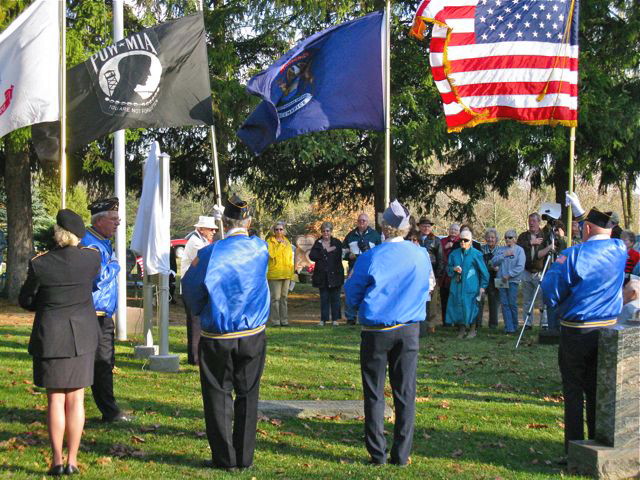West Highland Cemetery / West Highland Cemetery
The need for a burying ground arose soon after Highland’s first settlers arrived in the 1830s. They “laid out” an acre for cemetery use in 1835-36. The Highland Baptist Church bought the land in 1841. In 1915, at the urging of the Ladies Aid society, the West Highland Cemetery Association organized to improve the cemetery. It added an iron fence and plantings, and in 1927 took over ownership. In 1934 more than one hundred spruce trees were planted. By 1977, when ownership passed to Highland Township, the cemetery had grown to four acres in size. Although some of the earliest grave markers have disappeared, several hundred gravestones and monuments displaying a variety of nineteenth century funerary art remain.This cemetery is the final resting place of several Highland area settlers and prominent citizens, including Rufus Tenny. He arrived in 1832 and became the township’s first supervisor. The area’s first church service, school and township meeting were held at the farm of his brother Jesse. Also buried here is Squire W. Rowe, who settled in Highland in 1835. He was township supervisor for many years before being elected to serve in the Michigan House of Representatives in 1865. John Mudge was the first veteran interred here. He served as a chaplain during the American Revolution and died in 1839 at the age of 84. Other burials include veterans of the War of 1812, the Civil War, World War I, World War II, and the Vietnam Conflict.
Plaque via Michigan History Center